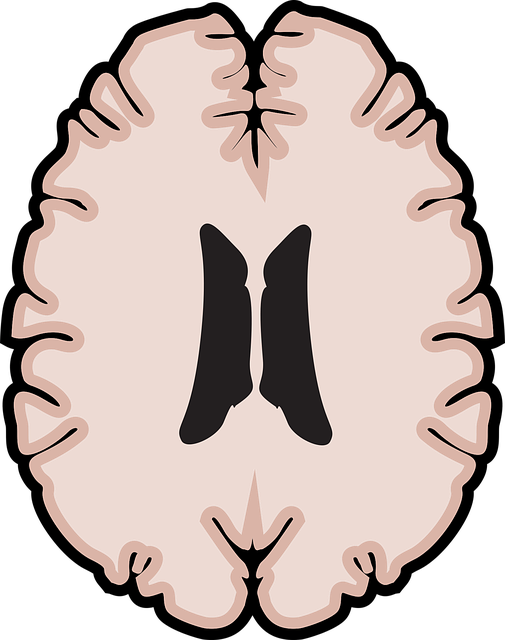Parker Obsessive Compulsive Disorder Therapy (POCDT) is a culturally sensitive, evidence-based approach combining cognitive restructuring, exposure therapy, and resilience building. Evaluating its effectiveness involves a blend of quantitative (Yale-Brown Obsessive Compulsive Scale, standardized questionnaires) and qualitative methods (interviews, focus groups, case studies), providing insights into symptom reduction, social skills improvement, and emotional understanding. The Mixed Methods Approach ensures a holistic evaluation, guiding policy analysis and program refinement for enhanced OCD support.
“Mental wellness program evaluations are crucial for measuring the effectiveness of interventions like Parker Obsessive Compulsive Disorder Therapy (POCDT). This article explores standardized measures, qualitative assessments, and the power of mixed methods in evaluating POCDT. We delve into the benefits of quantitative data, such as scores from OCD-specific questionnaires, alongside rich insights from qualitative techniques like interviews and focus groups. By combining these approaches, evaluators can gain a comprehensive understanding of POCDT’s impact.”
- Understanding Parker Obsessive Compulsive Disorder Therapy (POCDT): A Brief Overview
- Evaluating the Effectiveness of Mental Wellness Programs: Standardized Measures
- Qualitative Assessment Techniques for POCDT Program Evaluation
- Mixed Methods Approach: Combining Quantitative and Qualitative Evaluations
Understanding Parker Obsessive Compulsive Disorder Therapy (POCDT): A Brief Overview

Parker Obsessive Compulsive Disorder Therapy (POCDT) is a structured, evidence-based approach designed to help individuals manage and overcome OCD symptoms. This therapeutic method focuses on challenging and modifying obsessive thoughts and compulsive behaviors through a combination of cognitive restructuring, exposure therapy, and resilience building exercises. By employing techniques tailored to each person’s unique experiences, POCDT aims to enhance mental wellness and improve quality of life.
A key component of POCDT involves guiding individuals in maintaining a Mental Wellness Journal, where they can track their thoughts, feelings, and behaviors related to OCD. This practice offers valuable insights into triggers, patterns, and coping strategies, fostering self-awareness and personal growth. Additionally, POCDT incorporates cultural sensitivity in mental healthcare practice, recognizing that every individual brings their own cultural context to therapy. Understanding these nuances ensures tailored interventions that respect diversity and promote inclusive care.
Evaluating the Effectiveness of Mental Wellness Programs: Standardized Measures

Evaluating the effectiveness of mental wellness programs is a critical aspect of ensuring their success and impact on individuals’ lives. Standardized measures offer a structured approach to assess progress and outcomes, providing valuable insights for program improvement. These measures include well-established tools such as the Yale-Brown Obsessive Compulsive Scale (Y-BOCS) for OCD-focused therapies, like Parker Obsessive Compulsive Disorder Therapy. The Y-BOCS evaluates symptoms’ severity, offering a consistent framework for tracking changes over time.
Additionally, social skills training and self-awareness exercises can be measured using standardized questionnaires assessing interpersonal functioning and emotional understanding. These tools help identify improvements in areas such as communication, relationship building, and emotion regulation—key components of overall mental wellness. Moreover, positive thinking interventions often utilize subjectively reported measures to gauge changes in attitudes and beliefs, which can significantly impact an individual’s well-being.
Qualitative Assessment Techniques for POCDT Program Evaluation

Evaluating the effectiveness of a mental wellness program, such as Parker Obsessive Compulsive Disorder Therapy (POCDT), often involves qualitative assessment techniques to gain deep insights into participants’ experiences and outcomes. These methods are particularly valuable for understanding complex emotional processes like those involved in treating OCD. Qualitative approaches allow researchers and therapists to explore the nuanced impact of therapy on individuals’ lives, including their inner strength development and burnout prevention strategies.
Through in-depth interviews, focus groups, and case studies, POCDT program evaluators can uncover participants’ perceptions of their therapeutic journey. This includes how they navigated emotional healing processes, adapted coping mechanisms, and perceived changes in their daily functioning. By listening to their stories, therapists gain valuable insights into the program’s strengths and areas for improvement, ensuring ongoing refinement and enhanced support for those seeking relief from OCD symptoms.
Mixed Methods Approach: Combining Quantitative and Qualitative Evaluations

Evaluating mental wellness programs requires a comprehensive approach that integrates both quantitative and qualitative methodologies, offering a more nuanced understanding of their effectiveness. The Mixed Methods Approach combines statistical analysis with in-depth exploration, providing a holistic view of program impact. Quantitative methods, such as surveys and standardized assessments, measure changes in symptoms like anxiety or depression, offering objective data.
Qualitative techniques, including interviews and focus groups, delve into participants’ subjective experiences, insights, and perceptions. For instance, exploring individuals’ journeys with Parker Obsessive Compulsive Disorder (OCD) therapy through self-awareness exercises can reveal confidence-boosting outcomes not immediately apparent in numerical data. This integration facilitates a more complete mental health policy analysis and advocacy, guiding the refinement of programs to better serve those seeking support.
The evaluation of mental wellness programs, particularly Parker Obsessive Compulsive Disorder Therapy (POCDT), is a multifaceted process. By combining standardized measures and qualitative assessment techniques, we gain a comprehensive understanding of POCDT’s effectiveness. This mixed methods approach allows for a deeper exploration of participants’ experiences and perceptions, ensuring that program improvements are data-driven and aligned with real-world needs. Standardized tools, coupled with rich qualitative insights, provide valuable metrics to enhance POCDT and other mental wellness initiatives, ultimately fostering better outcomes for individuals seeking support.














